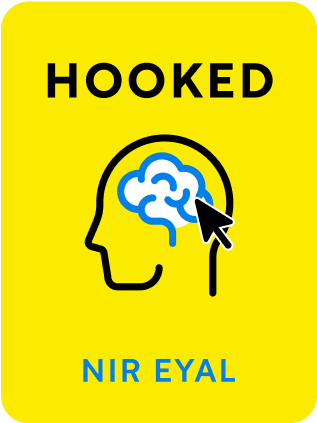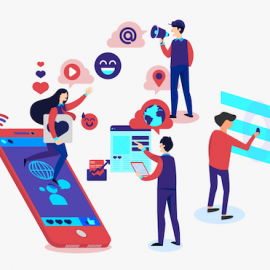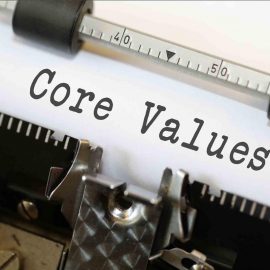

This article is an excerpt from the Shortform summary of "Hooked" by Nir Eyal and Ryan Hoover. Shortform has the world's best summaries of books you should be reading.
Like this article? Sign up for a free trial here .
What is the Hooked loop? Is manipulation using the Hooked loop ethical or not?
The Hooked loop is the cycle of trigger, action, reward, and investment that has the potential to addict customers. The Manipulation Matrix evaluates when the Hooked loop is being used for good or evil.
Read more about the Hooked loop and the Manipulation Matrix.
Manipulation Matrix Using the Hooked Loop
With great power comes great responsibility. You’ve now learned how to build products that change people’s behaviors, be persuasive, and manipulate people into doing things they might not naturally do.
This can sound evil. Yet many successful products ranging in morality manipulate people’s behavior. Why is Weight Watchers any better than slot machines? How do we distinguish good habit forming from bad?
Hooked provides the useful Manipulation Matrix, which can help you examine whether you should be attempting to hook your users. Depending on whether you believe your product improves the user’s life and whether you use the product yourself, you fit into these profiles:
| Maker does not use it | Maker uses it | |
| Materially improves the user’s life | Peddler | Facilitator |
| Does not improve the user’s life | Dealer | Entertainer |
While your bin placement doesn’t guarantee success, morality, or market size, they do affect your chances of success. Businesses in different bins have different properties in their use of the Hooked loop.
Facilitator
You create something you would use and earnestly believe makes the user’s life better. These tend to be healthy habits.
You cannot consider yourself a facilitator unless you’ve experienced the problem yourself.
Because you have the problem yourself, you know the user well, and are often best positioned to solve the user’s problems. This increases your chance of success.
If it’s something you would have used earlier in life but wouldn’t today, then the longer the time difference, the lower your odds of success. For instance, if you’re building a product for apartment renting, but you’ve owned a house for 10 years, you’re likely out of touch with what users want.
There is still a risk of addiction for even the most healthy products, but luckily the rate is low (<1%), and the benefits likely outweigh the cons.
Peddler
You create something you don’t use yourself, but you believe improves the user’s life.
- Don’t fool yourself – ask yourself if you honestly believe the product benefits the user’s life, or whether you’re just rationalizing something you know is bad.
Because you don’t have the problem yourself, you have to take extra leaps to imagine the user who’ll find the product valuable.
- You may also have the hubris that you can understand someone who’s unlike you, when really you may be completely off base and building something no one wants.
You operate at a heavy disadvantage because of your disconnect with your customers and their needs, which makes your product feel inauthentic. This lowers your chances of success.
Common examples include advertising to a market unlike yourself, too-good-to-be-true products.
Entertainer
If you just want to have fun, but can’t honestly claim it improves lives, it’s entertainment.
Entertainment, like art, is important, but tends to be fleeting because they don’t consistently improve people’s lives. They tend not to be habit-forming products – you can only watch a movie so many times, until you seek the next dose of novelty.
- This is why entertainment is a hits-driven business. Demands shift, become unpredictable, and don’t form reliable habits.
Sustainable businesses here come not from the content itself or the user’s habits – they arise from effective distribution to get to more users while they’re still hot, and continuous novelty to keep feeding interest.
(Shortform note: entertainment that has other variable rewards, like a social community and infinite variability, are more likely to form persistent habits – like online role-playing game World of Warcraft, or the large content library of Netflix.
Also, this categorization is subjective – some game developers are facilitators who honestly believe their games honestly improve the world, but their games are subject to the same properties as games by developers who are entertainers.)
Dealer
In the absence of both utility and self-usage, you presumably are building the product only to make money using the Hooked loop.
This can put you in morally precarious positions.
Casinos and drugs both squarely fit in this category.

———End of Preview———
Like what you just read? Read the rest of the world's best summary of Nir Eyal and Ryan Hoover's "Hooked" at Shortform .
Here's what you'll find in our full Hooked summary :
- The 4 key steps that addictive tech products use to ensnare you
- Why user rewards need to be random and variable to have the strongest effect
- How to build irresistible apps yoruself






